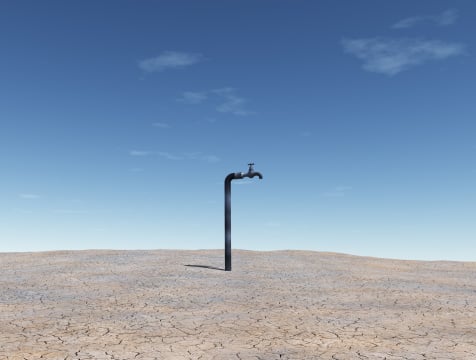The drought that has persisted for two years, particularly in California, has been described as the worst one in the region for decades. For much of the United States, the situation could become much worse than that and persist for a period that even the most pessimistic analysts may never have imagined. Think back to medieval times. Source: Thinkstock
Source: Thinkstock
Based on new research published in Science Advances and written by experts Benjamin I. Cook, Toby A. Ault and James E. Smerdon titled “Unprecedented 21st Century Drought Risk in the American Southwest and Central Plains,” the authors concluded:
In the Southwest and Central Plains of Western North America, climate change is expected to increase drought severity in the coming decades. These regions nevertheless experienced extended Medieval-era droughts that were more persistent than any historical event, providing crucial targets in the paleoclimate record for benchmarking the severity of future drought risks. We use an empirical drought reconstruction and three soil moisture metrics from 17 state-of-the-art general circulation models to show that these models project significantly drier conditions in the later half of the 21st century compared to the 20th century and earlier paleoclimatic intervals. This desiccation is consistent across most of the models and moisture balance variables, indicating a coherent and robust drying response to warming despite the diversity of models and metrics analyzed. Notably, future drought risk will likely exceed even the driest centuries of the Medieval Climate Anomaly (1100–1300 CE) in both moderate (RCP 4.5) and high (RCP 8.5) future emissions scenarios, leading to unprecedented drought conditions during the last millennium.
Jargon and references aside, a “magadrought” could change the area enough so that there could be a multi-decade drought in the region that might persist for the second half of the 21st century. Also, according to the research, the situation could result in problems that would cause “major adaptation challenge for managing ecological and anthropogenic water needs in the region.”
The area described eventually might not have any value for agricultural use or as a source of water. Of course, over the next several decades things might change to affect the outcome, but they would have to change a great deal.
ALSO READ: The Worst States to Grow Old In
Sponsored: Find a Qualified Financial Advisor
Finding a qualified financial advisor doesn’t have to be hard. SmartAsset’s free tool matches you with up to 3 fiduciary financial advisors in your area in 5 minutes. Each advisor has been vetted by SmartAsset and is held to a fiduciary standard to act in your best interests. If you’re ready to be matched with local advisors that can help you achieve your financial goals, get started now.
Thank you for reading! Have some feedback for us?
Contact the 24/7 Wall St. editorial team.



